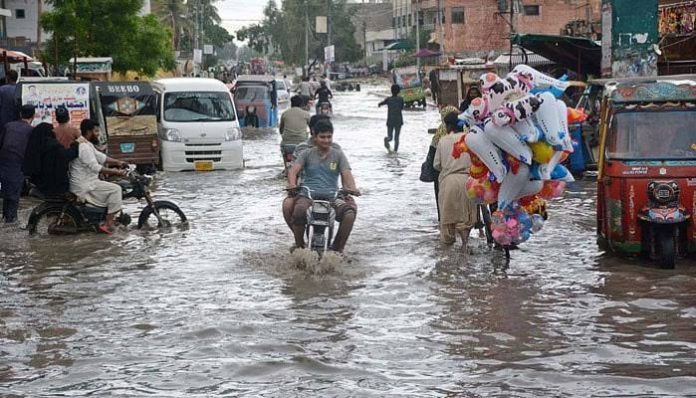Karachi experienced heavy rainfall that led to serious flooding in many areas of the city, disturbing the daily routine of thousands of people. The continuous downpour left several main and inner roads under water, making movement almost impossible for vehicles and pedestrians.
The rain also caused long traffic jams, power breakdowns in many neighborhoods, and visible damage to public and private infrastructure.
Rescue teams, along with the city administration, worked around the clock to handle the situation. They faced challenges as water entered homes, shops, and markets in low-lying localities.
Many families were forced to leave their houses temporarily to protect themselves from rising water levels. Shopkeepers also suffered losses as rainwater damaged goods and supplies.
Commuters were among the worst affected. Long traffic delays forced people to wait for hours, while many vehicles broke down in the middle of flooded streets. Public transport, including buses and rickshaws, was badly disrupted, making it difficult for workers and students to reach their destinations.
Authorities have asked citizens to remain at home as much as possible and avoid unnecessary travel until the situation improves. They also warned that more rainfall is expected in the coming hours, which could make the flooding even worse.
The rain once again exposed the city’s weak drainage system, as clogged stormwater drains and poor maintenance allowed water to accumulate quickly. Residents expressed frustration over the lack of preparedness, demanding stronger measures from the government to prevent similar crises in the future.


